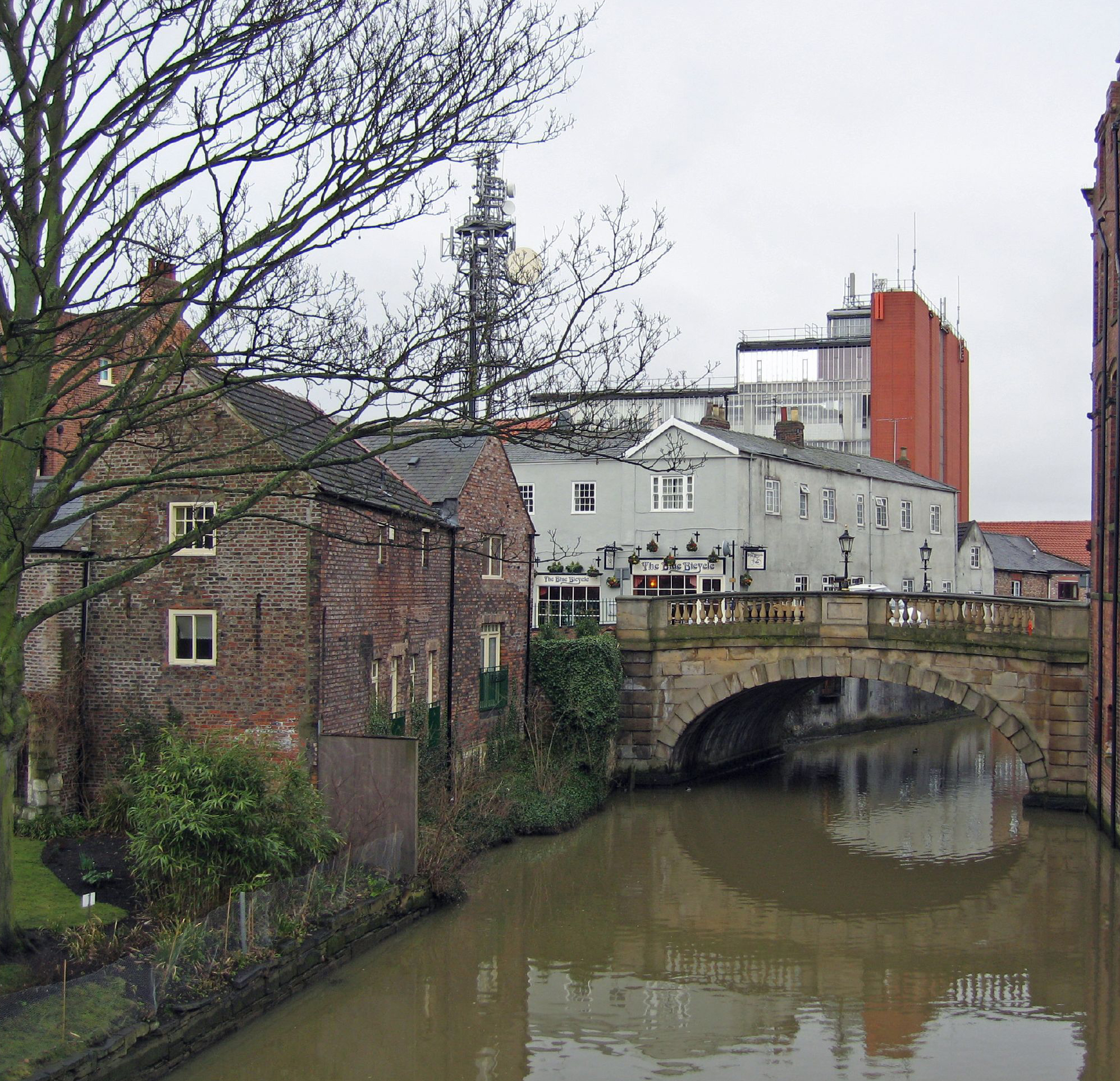- River Foss
Infobox River | river_name = River Foss

caption = The River Foss atYork
origin = NearOulston Reservoir,Yearsley
mouth = River Ouse, York
basin_countries =England
length =
elevation = 160 m (525 ft)
discharge =
watershed = The River Foss is an improvedriver inNorth Yorkshire ,England , and atributary of the River Ouse. It rises atOulston reservoir atYearsley and runs south through theVale of York toYork itself, which stands at the confluence of the Ouse and the Foss.William the Conqueror dammed the River Foss in1069 just south ofYork Castle close to its confluence with the Ouse in order to create a moat around the castle complex. The damming also caused the river to flood further upstream in what is now the Hungate andLayerthorpe areas, forming a large lake that would become known as the "King's Pool" (or "King's Fishpool"). The King's Pool became an integral part of the city's inner defences during the Middle Ages (which explains the absence of defensive wall in the area today) and became well-known for its abundance of fish. By the 17th Century, however, the King's Pool and the Foss as a whole were in a state of decline. Silt from upriver had been collecting in the lake and there was not enough water coming down to move it on. This continued over the centuries to a point that the lake had become too shallow to remain viable as a defence of the city. Indeed, by1644 the lake was shallow enough for Parliamentarian forces underSir Thomas Fairfax to consider crossing it on foot as a way of breaking theSiege of York during theEnglish Civil War . A century later, the waters were so low that marshy islands had begun to appear, giving the area its modern name ofFoss Islands , and the townspeople had taken to throwing animal waste and other rubbish into the water. During the summer months the river smelled foul and was mostly dry and stagnant. The authorities knew that something had to be done.Improvement works were promoted by Acts of Parliament in
1793 and1801 . In the works that followed what remained of the King's Pool finally disappeared and the newly-formedFoss Navigation Company canalised the river and sought to make it navigable as far asSheriff Hutton . Today, it is only navigable for just over a mile from Monk Bridge to Blue Bridge, where it joins the Ouse.The Foss Barrier is built across the river near its mouth. When closed, it prevents
flood water from the much larger Ouse flowing "up" the Foss and flooding those parts of York in its vicinity. Water flowing "down" the Foss can be pumped over the top of the barrier and into the Ouse.Sources
*cite book | last = Evans | first = Antonia (ed)| title =The York Book | publisher =Blue Bridge | location =York|year = 2002 | id =ISBN 0-9542749-0-3
Wikimedia Foundation. 2010.
